- Remove any old thread sealant, gasket material, or sealant using remover such as chisel or scraper.
- Clean the upper oil pan and upper oil pan components with solvent.
Note: Ensure that the sealing surface is clear of oil, grease and old sealing material.
- Clean out debris from the bolt holes.
Warning: Refer to Safety Glasses and Compressed Air Warning in the Preface section.
- Dry the upper oil pan and upper oil pan components with compressed air.
Note: The complete installation procedure of the upper oil pan should be done in 10 minutes.
Note: DO NOT coat sealing compound on the upper oil pan bolt holes and bolt threads.
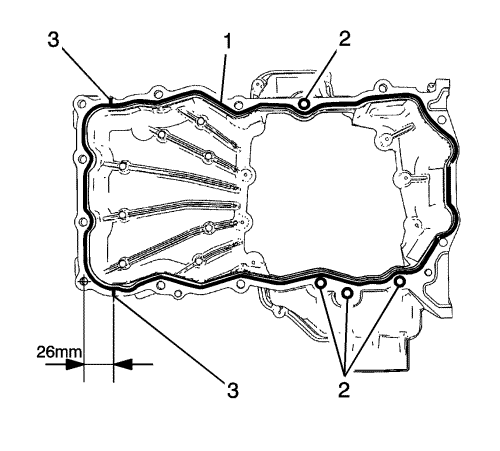
- Apply sealing compound on sealant line (1) including circular dispensing on 4 holes (2).
- Apply spot dispensing at 2 areas (3).
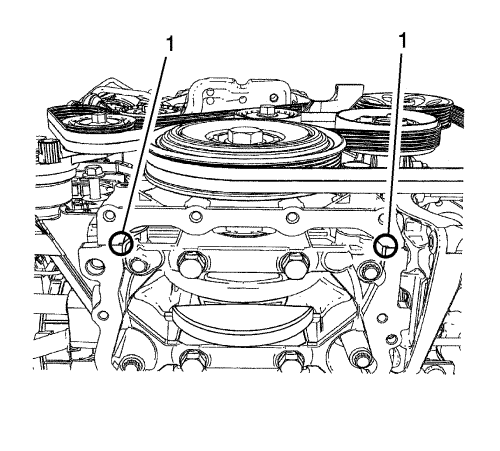
- Fill sealant compound at 2 areas (1) between front cover and bed plate if the space is empty.
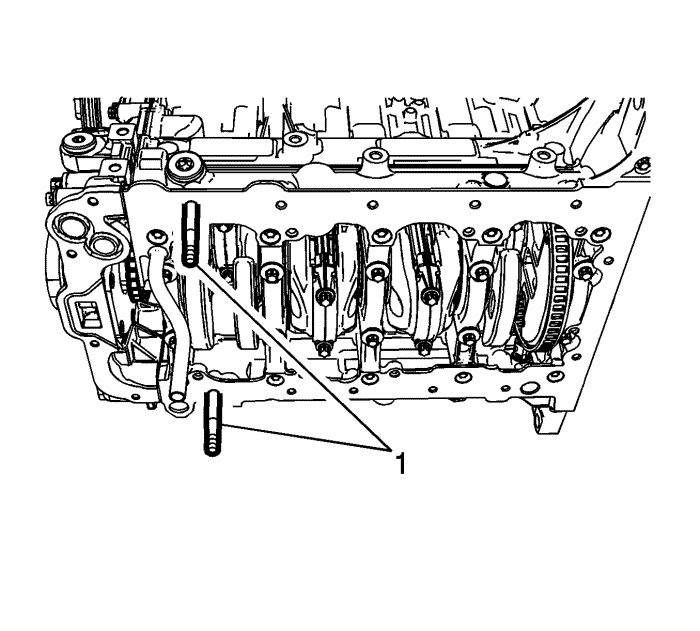
Note: The alignment pins will help maintaining position while installing the bolts.
- To aid in upper oil pan alignment, install 2 EN-50435 guide pins (1) on the bed plate.
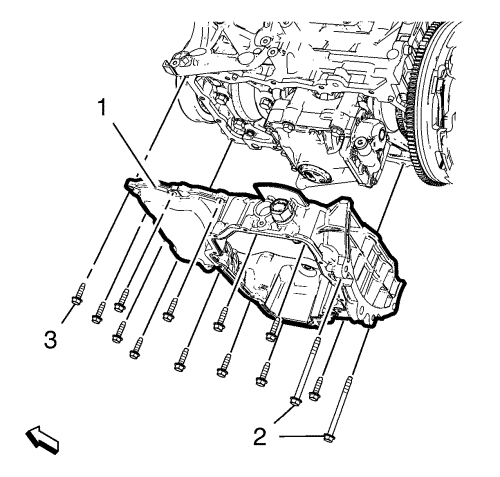
- Install the upper oil sump (1).
Caution: Refer to Fastener Caution in the Preface section.
- Start upper oil sump bolts and remove EN-50435 Guide Pins
- Install 14 upper sump retaining bolts (2, 3) and tighten evenly to 25 N·m (18 lb ft).

- For manual transmission, install the 3 oil pan to transmission bolts (1) and tighten to 58 N·m (43 lb ft).

- For automatic transmission, install the 2 oil pan to transmission bolts (1) and tighten to 58 N·m (43 lb ft).
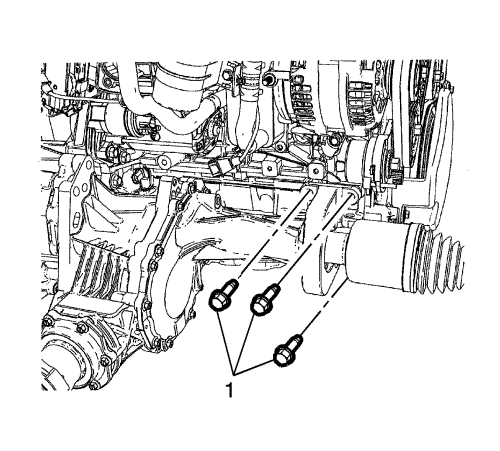
- Install the 3 Transfer Case Bridge bolts (1) and tighten to 50 N·m (37 lb ft).

- Connect the engine oil level indicator wiring harness plug (1) to the engine oil level indicator (2).
- Install the exhaust front pipe. Refer to
Front Pipe Replacement : LNQ → LF1 → LE5 .
- Install the lower sump. Refer to Lower Sump Replacement .
- Install the engine shield. Refer to Engine Shield Replacement .
- Lower the vehicle.
- Install the oil level indicator .
- Fill the engine with engine oil. Refer to Approximate Fluid Capacities .












